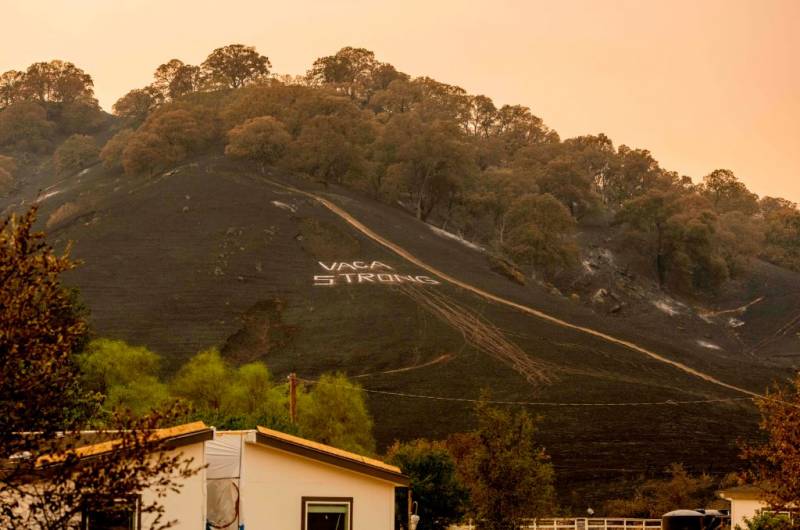Latest Developments
When separate fires are burning near each other Cal Fire often calls them “complexes.” There are three such massive groups of fires currently burning in and around the Bay Area:
- LNU Lightning Complex: Sonoma, Napa, Solano, Yolo, Lake counties (including the Hennessey, Gamble, Walbridge, Meyers and Green fires)
- SCU Lightning Complex: Santa Clara, Alameda, Contra Costa, San Joaquin, Stanislaus counties (including fires in the Deer, Calaveras and Canyon zones)
- CZU August Lightning Complex: San Mateo and Santa Cruz counties (including the Warnella, Waddell fires)
LNU Lightning Complex
Click on each of the following links to see each county’s evacuation updates: Napa County, Solano County, Lake County, Yolo County and Sonoma County.
The LNU complex of fires, ignited by lightning strikes in Napa County on Aug. 17, consists of seven separate blazes burning in five different counties, including Sonoma, Napa, Solano and small sections of Yolo and Lake counties.
As of Wednesday morning, the fire complex was 33% contained and had grown to more than 360,000 acres, making it the third-largest wildfire in California history, Cal Fire. The group of blazes have so far claimed the lives of at least five people, injured at least four more and destroyed 1,080 homes and other buildings, while continuing to threaten 30,500 other structures.
A major firefighting effort is being directed Wednesday at the northern end of the Hennessey Fire — part of the LNU Complex — burning just south of Middletown in Lake County, Cal Fire officials said.
“It’s our top priority,” said Cal Fire Operations Section Chief Chris Waters at a Wednesday briefing. “All the resources on this fire have started to coalesce in that area so we can start to close this thing off.”
Firefighters have also made steady progress on the two large blazes in Sonoma County that are also part of the LNU Complex: the Meyers Fire near Jenner, which is 97% contained, and the Walbridge Fire, which is 19% contained. Sonoma County officials on Tuesday lifted evacuation orders for thousands of people, allowing them to return home.
Still, the Walbridge Fire, south of Lake Sonoma, has destroyed scores of homes and other buildings and remains a tough fight, Waters said.
“Heavy fuels, steep and broken terrain, it’s very difficult terrain to work in. Also a lot of homes and a lot of structures we have to work around,” Waters said. But, he added, crews “continue to make good progress in tying together vineyards, people’s backyards, strategic points.”

